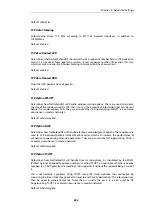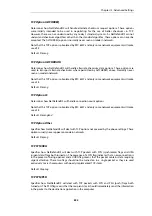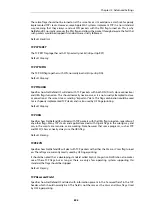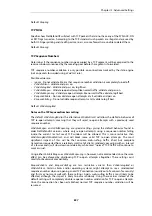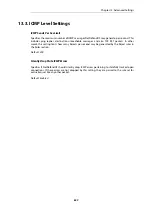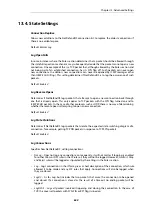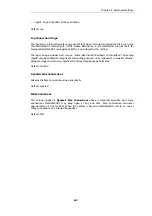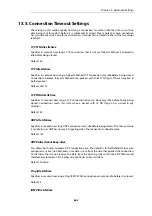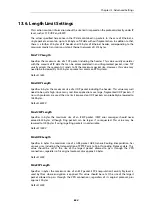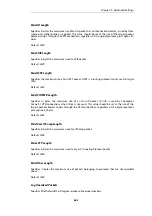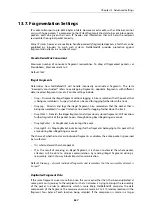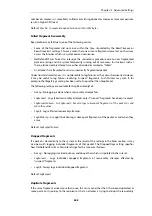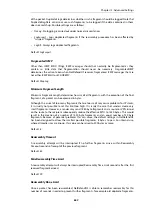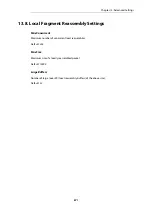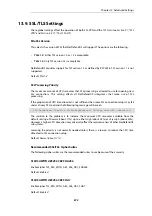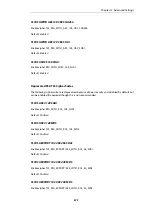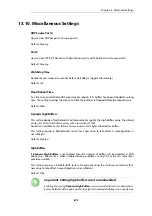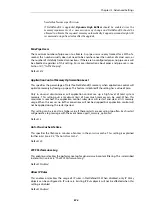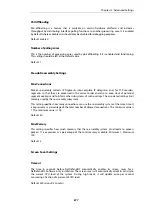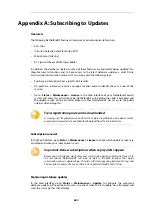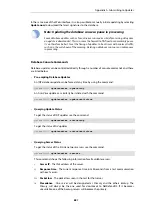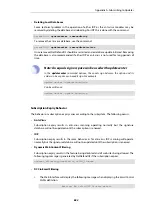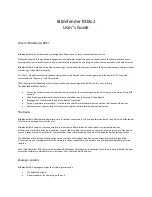
number of samples, it is more likely to find mismatching duplicates. However, more comparisons
result in higher CPU load.
Default:
Check8 – compare 8 random locations, a total of 32 bytes
Failed Fragment Reassembly
Reassemblies may fail due to one of the following causes:
•
Some of the fragments did not arrive within the time stipulated by the ReassTimeout or
ReassTimeLimit settings. This may mean that one or more fragments were lost on their way
across the Internet, which is a quite common occurrence.
•
NetDefendOS was forced to interrupt the reassembly procedure due to new fragmented
packets arriving and the system temporarily running out of resources. In situations such as
these, old reassembly attempts are either discarded or marked as "failed".
•
An attacker has attempted to send an incorrectly fragmented packet.
Under normal circumstances, it is not desirable to log failures as they occur frequently. However,
it may be useful to log failures involving "suspect" fragments. Such failures may arise if, for
example, the IllegalFrags setting has been set to Drop rather than DropPacket.
The following settings are available for FragReassemblyFail:
•
NoLog
- No logging is done when a reassembly attempt fails.
•
LogSuspect
- Logs failed reassembly attempts only if "suspect" fragments have been involved.
•
LogSuspectSubseq - As LogSuspect, but also logs subsequent fragments of the packet as and
when they arrive
•
LogAll
- Logs all failed reassembly attempts.
•
LogAllSubseq
- As LogAll, but also logs subsequent fragments of the packet as and when they
arrive.
Default:
LogSuspectSubseq
Dropped Fragments
If a packet is denied entry to the system as the result of the settings in the Rules section, it may
also be worth logging individual fragments of that packet. The DroppedFrags setting specifies
how NetDefendOS will act. Possible settings for this rule are as follows:
•
NoLog
– No logging is carried out over and above that which is stipulated in the rule set.
•
LogSuspect
- Logs individual dropped fragments of reassembly attempts affected by
"suspect" fragments.
•
LogAll
- Always logs individual dropped fragments.
Default:
LogSuspect
Duplicate Fragments
If the same fragment arrives more than once, this can mean either that it has been duplicated at
some point on its journey to the recipient or that an attacker is trying to disrupt the reassembly
Chapter 13: Advanced Settings
868
Summary of Contents for NetDefendOS
Page 30: ...Figure 1 3 Packet Flow Schematic Part III Chapter 1 NetDefendOS Overview 30 ...
Page 32: ...Chapter 1 NetDefendOS Overview 32 ...
Page 144: ...Chapter 2 Management and Maintenance 144 ...
Page 284: ...Chapter 3 Fundamentals 284 ...
Page 392: ...Chapter 4 Routing 392 ...
Page 419: ... Host 2001 DB8 1 MAC 00 90 12 13 14 15 5 Click OK Chapter 5 DHCP Services 419 ...
Page 420: ...Chapter 5 DHCP Services 420 ...
Page 573: ...Chapter 6 Security Mechanisms 573 ...
Page 607: ...Chapter 7 Address Translation 607 ...
Page 666: ...Chapter 8 User Authentication 666 ...
Page 775: ...Chapter 9 VPN 775 ...
Page 819: ...Chapter 10 Traffic Management 819 ...
Page 842: ...Chapter 11 High Availability 842 ...
Page 866: ...Default Enabled Chapter 13 Advanced Settings 866 ...
Page 879: ...Chapter 13 Advanced Settings 879 ...

